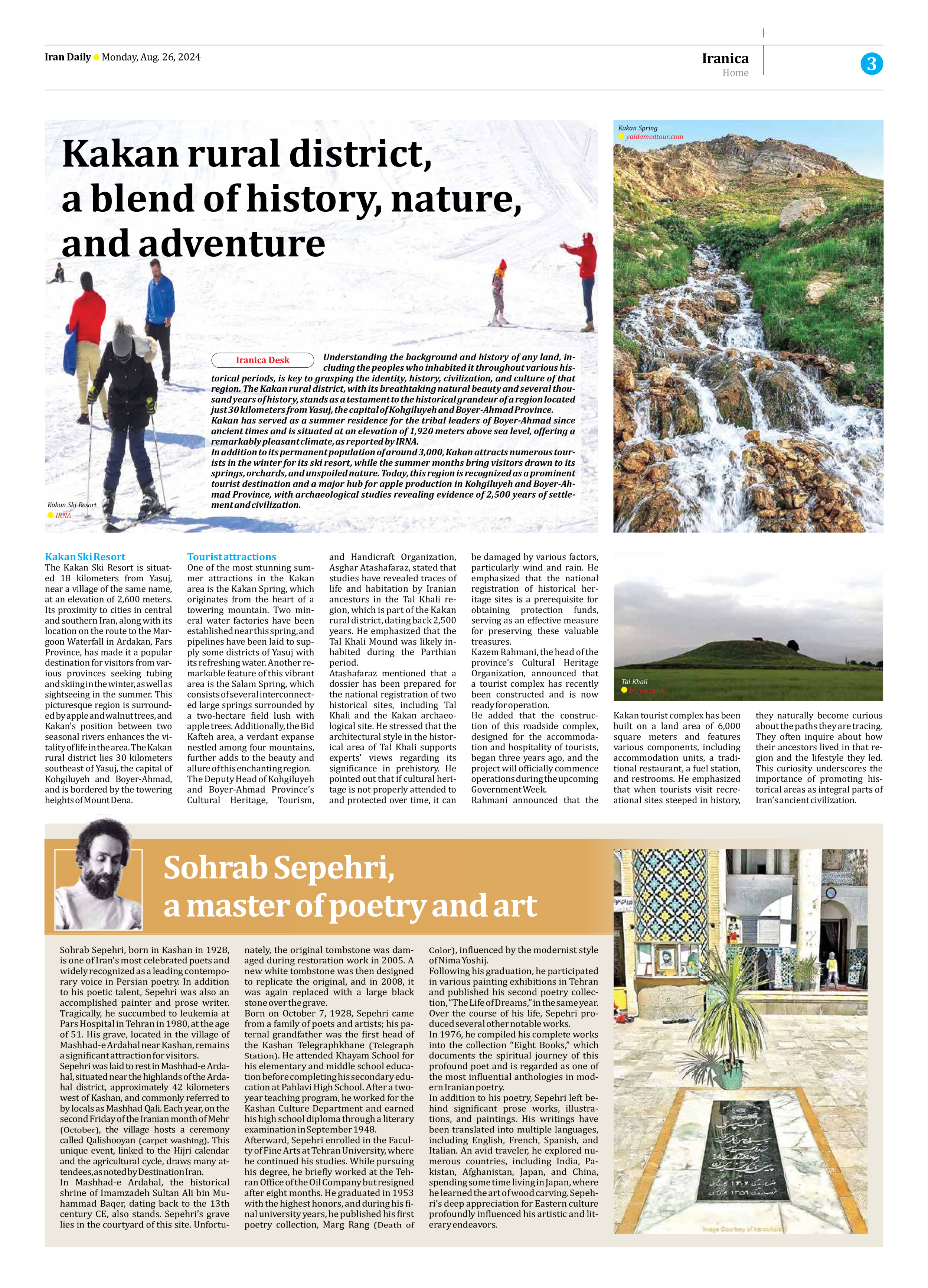
Sohrab Sepehri, a master of poetry and art
Sohrab Sepehri, born in Kashan in 1928, is one of Iran’s most celebrated poets and widely recognized as a leading contemporary voice in Persian poetry. In addition to his poetic talent, Sepehri was also an accomplished painter and prose writer. Tragically, he succumbed to leukemia at Pars Hospital in Tehran in 1980, at the age of 51. His grave, located in the village of Mashhad-e Ardahal near Kashan, remains a significant attraction for visitors.
Sepehri was laid to rest in Mashhad-e Ardahal, situated near the highlands of the Ardahal district, approximately 42 kilometers west of Kashan, and commonly referred to by locals as Mashhad Qali. Each year, on the second Friday of the Iranian month of Mehr (October), the village hosts a ceremony called Qalishooyan (carpet washing). This unique event, linked to the Hijri calendar and the agricultural cycle, draws many attendees, as noted by Destination Iran.
In Mashhad-e Ardahal, the historical shrine of Imamzadeh Sultan Ali bin Muhammad Baqer, dating back to the 13th century CE, also stands. Sepehri’s grave lies in the courtyard of this site. Unfortunately, the original tombstone was damaged during restoration work in 2005. A new white tombstone was then designed to replicate the original, and in 2008, it was again replaced with a large black stone over the grave.
Born on October 7, 1928, Sepehri came from a family of poets and artists; his paternal grandfather was the first head of the Kashan Telegraphkhane (Telegraph Station). He attended Khayam School for his elementary and middle school education before completing his secondary education at Pahlavi High School. After a two-year teaching program, he worked for the Kashan Culture Department and earned his high school diploma through a literary examination in September 1948.
Afterward, Sepehri enrolled in the Faculty of Fine Arts at Tehran University, where he continued his studies. While pursuing his degree, he briefly worked at the Tehran Office of the Oil Company but resigned after eight months. He graduated in 1953 with the highest honors, and during his final university years, he published his first poetry collection, Marg Rang (Death of Color), influenced by the modernist style of Nima Yoshij.
Following his graduation, he participated in various painting exhibitions in Tehran and published his second poetry collection, “The Life of Dreams,” in the same year. Over the course of his life, Sepehri produced several other notable works.
In 1976, he compiled his complete works into the collection “Eight Books,” which documents the spiritual journey of this profound poet and is regarded as one of the most influential anthologies in modern Iranian poetry.
In addition to his poetry, Sepehri left behind significant prose works, illustrations, and paintings. His writings have been translated into multiple languages, including English, French, Spanish, and Italian. An avid traveler, he explored numerous countries, including India, Pakistan, Afghanistan, Japan, and China, spending some time living in Japan, where he learned the art of wood carving. Sepehri’s deep appreciation for Eastern culture profoundly influenced his artistic and literary endeavors.







